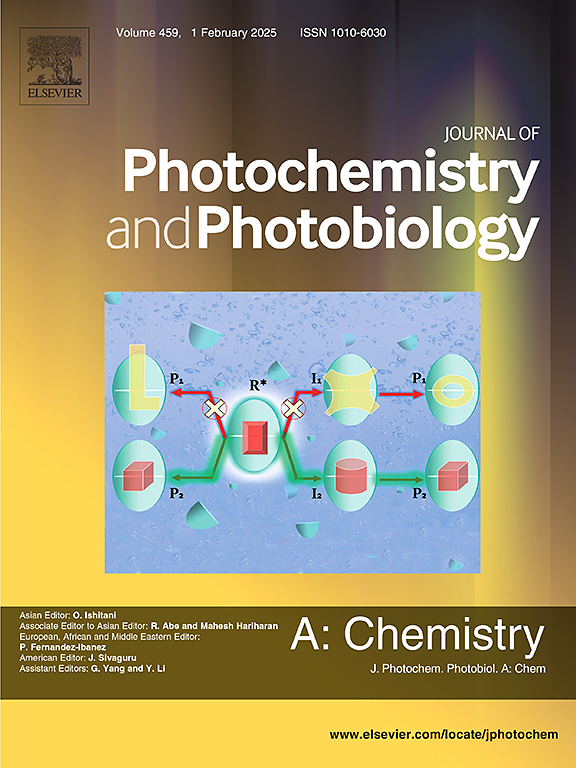Design, synthesis and photophysical properties of novel 2,4-disubstituted quinazolines
IF 4.1
3区 化学
Q2 CHEMISTRY, PHYSICAL
Journal of Photochemistry and Photobiology A-chemistry
Pub Date : 2025-03-13
DOI:10.1016/j.jphotochem.2025.116390
引用次数: 0
Abstract
A series of 2,4-diarylquinazolines bearing a 4-(trifluoromethyl)phenyl, 4-cyanophenyl, or 4-(formyl)phenyl group at position 4 and an electron-donating substituent at position 2 were synthesized via Pd-catalyzed cross-coupling of 4-bromo derivatives with arylboronic acids. A counterpart with a cyano group directly attached to the quinazoline core was also prepared. The UV–Vis absorption and photoluminescence properties of dilute solutions of these compounds were investigated, revealing that 2-(3,4-dimethoxyphenyl)quinazolines and 2-(9-ethyl-9H-carbazol-3-yl)quinazolines exhibited emission in toluene with quantum yields of up to 26 %. Furthermore, 9-ethyl-9H-carbazol-3-yl-substituted derivatives demonstrated emission in the solid state with efficiencies up to 15 %. The absorption and emission behavior in solvents with different polarities were examined for selected fluorophores, and their solvatochromism was assessed using the Lippert-Mataga, Bakhshiev, and Ravi equations. While the absorption spectra were solvent-independent, the emission spectra were significantly dependent on solvent polarity, confirming the formation of ICT states. Electrochemical studies and DFT calculations were performed to support the experimental observations. Notably, the synthesized formyl derivatives hold promise for use in the development of materials for dye-sensitized solar cells through condensation reactions with active methylene compounds.

求助全文
约1分钟内获得全文
求助全文
来源期刊
CiteScore
7.90
自引率
7.00%
发文量
580
审稿时长
48 days
期刊介绍:
JPPA publishes the results of fundamental studies on all aspects of chemical phenomena induced by interactions between light and molecules/matter of all kinds.
All systems capable of being described at the molecular or integrated multimolecular level are appropriate for the journal. This includes all molecular chemical species as well as biomolecular, supramolecular, polymer and other macromolecular systems, as well as solid state photochemistry. In addition, the journal publishes studies of semiconductor and other photoactive organic and inorganic materials, photocatalysis (organic, inorganic, supramolecular and superconductor).
The scope includes condensed and gas phase photochemistry, as well as synchrotron radiation chemistry. A broad range of processes and techniques in photochemistry are covered such as light induced energy, electron and proton transfer; nonlinear photochemical behavior; mechanistic investigation of photochemical reactions and identification of the products of photochemical reactions; quantum yield determinations and measurements of rate constants for primary and secondary photochemical processes; steady-state and time-resolved emission, ultrafast spectroscopic methods, single molecule spectroscopy, time resolved X-ray diffraction, luminescence microscopy, and scattering spectroscopy applied to photochemistry. Papers in emerging and applied areas such as luminescent sensors, electroluminescence, solar energy conversion, atmospheric photochemistry, environmental remediation, and related photocatalytic chemistry are also welcome.

 求助内容:
求助内容: 应助结果提醒方式:
应助结果提醒方式:


